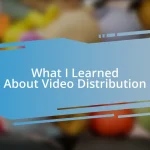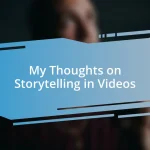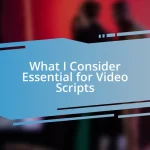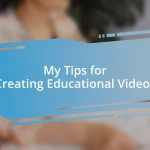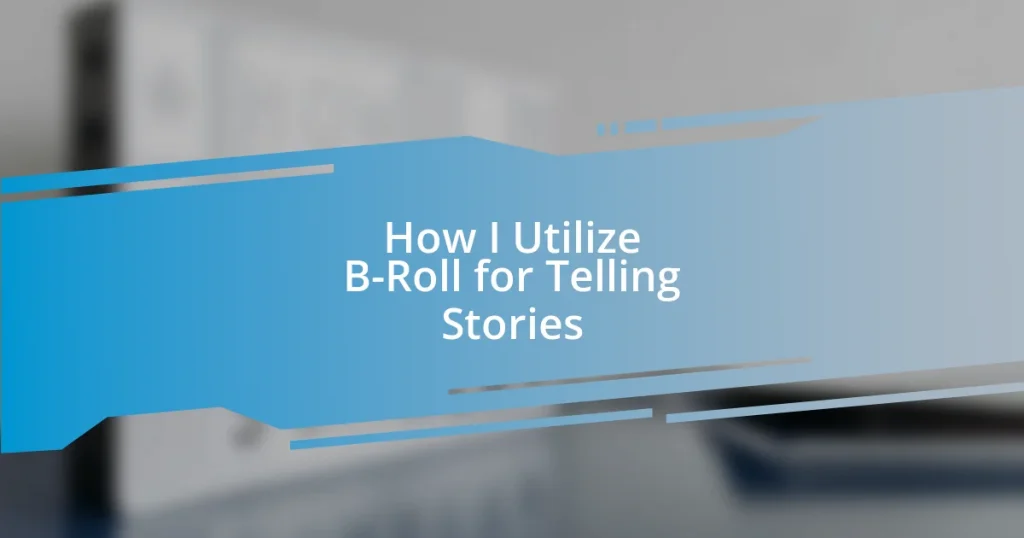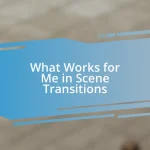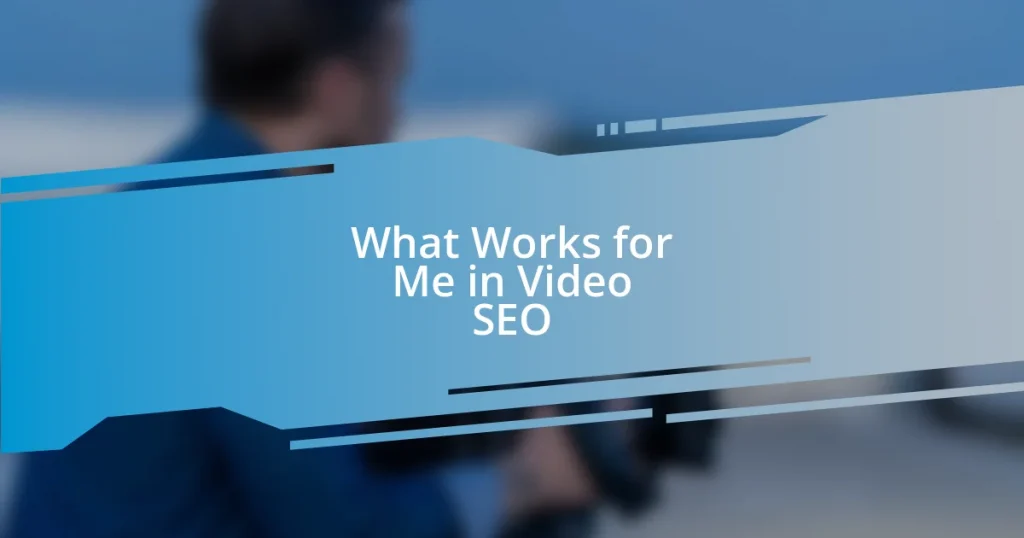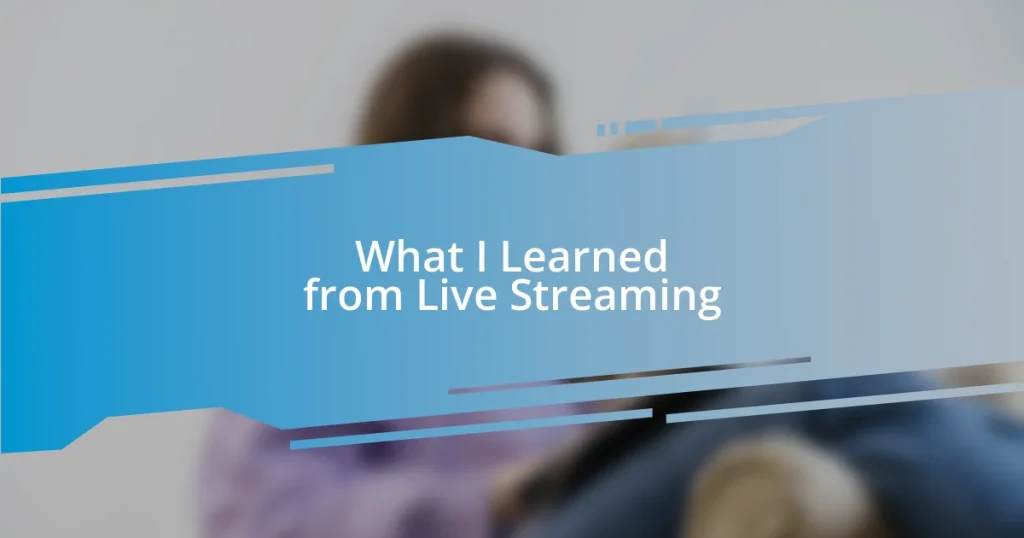Key takeaways:
- B-Roll enriches storytelling by adding depth, context, and emotional resonance, transforming flat footage into engaging narratives.
- Effective B-Roll planning includes identifying core messages, visualizing key moments, and scouting locations to ensure a seamless integration with A-Roll.
- Techniques like timing, movement, sound design, and color grading during editing enhance the emotional impact and narrative flow of both B-Roll and A-Roll.

Understanding B-Roll Importance
B-Roll is often the unsung hero of storytelling in video production. I remember a project where the main interview was powerful, but the footage felt flat. By interspersing relevant B-Roll of the environment and action around the interviewee, the whole scene transformed—it added depth and context that words alone couldn’t convey.
Think about those moments in your favorite documentaries when you’re drawn in by the visuals that complement the narration. Those images aren’t just filler; they evoke emotions and create a narrative flow. When I capture B-Roll, I often ask myself: What feeling do I want this shot to evoke? This question guides my choices and ensures that every clip serves a purpose.
The importance of B-Roll goes beyond aesthetics; it strengthens the overall message. I’ve found that when I weave in thoughtful B-Roll, it not only breaks up the monotony but also illustrates the story’s themes more vividly. Have you ever watched a video where the visuals seemed to echo the spoken words? That synergy is what makes storytelling memorable.
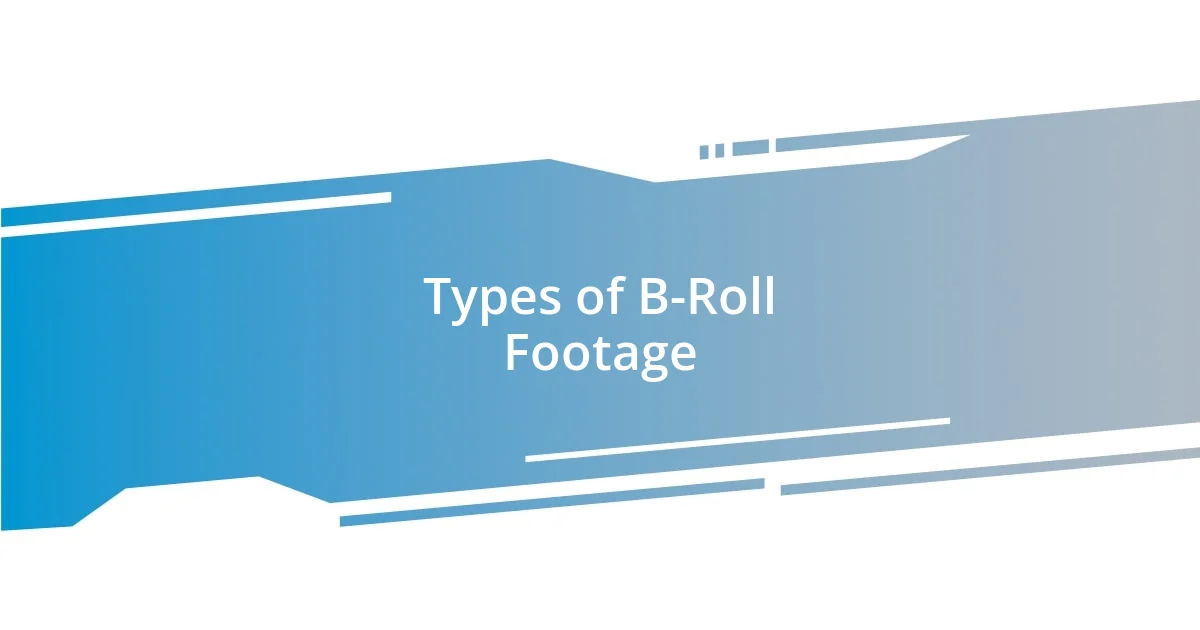
Types of B-Roll Footage
B-Roll footage comes in various forms, each serving a unique purpose. For instance, action shots can convey dynamic energy, which I’ve found essential when depicting sports or vibrant events. I remember a time when I focused on capturing athletes mid-action—those fast-paced clips brought the excitement of the moment to life, making the audience feel the adrenaline.
Another type that I frequently utilize is atmospheric B-Roll, which sets the mood or context. In one project, I filmed serene landscapes to juxtapose a hectic urban interview. The visual contrast not only grounded the conversation but also allowed viewers to sense the environment’s influence on the subjects. This type of B-Roll can enhance emotional connections by drawing viewers deeper into the narrative.
Lastly, cutaway shots are invaluable for providing context or additional information without breaking the flow of the story. I often shoot product details or close-ups, which serve as visual punctuation marks. For example, while telling a story about a local bakery, including close-ups of freshly baked bread helped to evoke a sensory experience that made the audience almost smell the aromas through the screen.
| Type of B-Roll | Description |
|---|---|
| Action Shots | Dynamic footage capturing movement and energy. |
| Atmospheric B-Roll | Visuals that set the mood or context for the narrative. |
| Cutaway Shots | Contextual clips that enhance the story without distraction. |
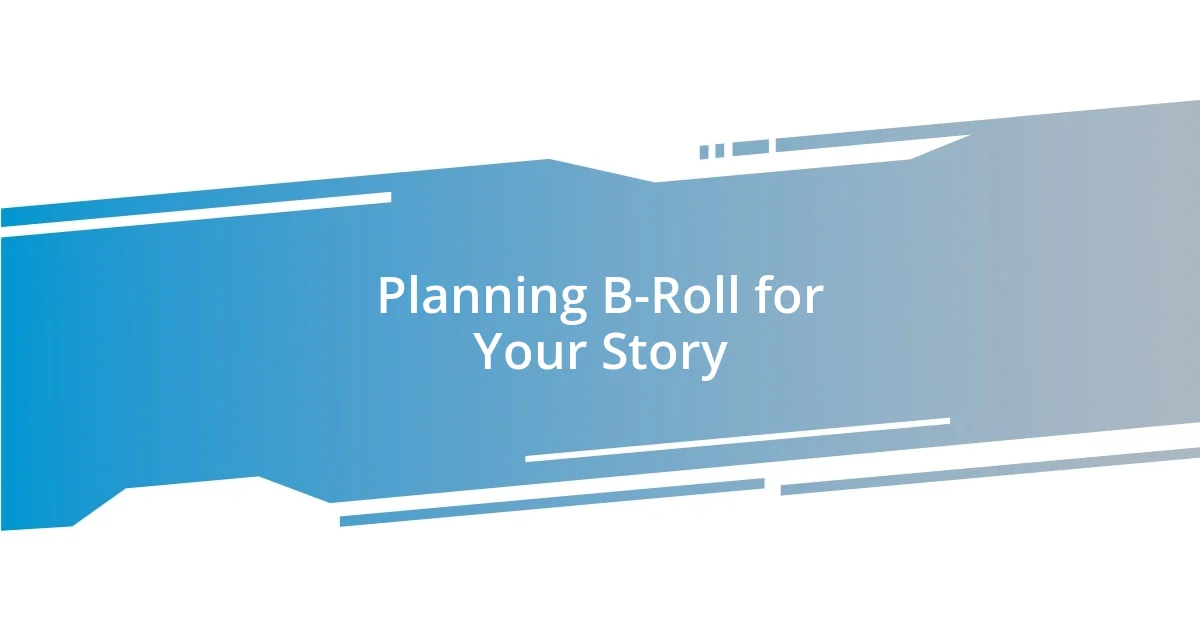
Planning B-Roll for Your Story
When I set out to plan B-Roll for a story, it often feels like piecing together a visual puzzle. Visualizing how each clip will interact with the main narrative helps me create a seamless flow. I recall a project where I crafted a compelling scene by filming the bustling market before a heartfelt interview with a vendor. Those shots of vibrant colors and lively interactions illustrated not just the setting but also the spirit of the community, enhancing the emotional weight of the interview.
To effectively plan your B-Roll, consider these key steps:
- Identify the Core Message: What do you want the viewer to take away?
- Visualize Key Moments: Sketch or storyboard moments you want to illustrate.
- Craft a Shot List: Create a detailed list of specific B-Roll shots you need.
- Scout Locations: Visit potential filming sites ahead of time to map out your shots.
- Capture Variety: Shoot different angles and types of B-Roll to keep it visually engaging.
- Stay Flexible: Be open to spontaneous shots that may arise during filming.
Every time I go in with this planning mindset, it primes me for magic to happen—those unexpected moments always add depth, and ultimately, tell my story even better than I initially envisioned.

Techniques for Effective B-Roll Use
To maximize the impact of your B-Roll, timing is crucial. I’ve learned that using B-Roll during emotional peaks in my narrative can amplify the viewer’s response. For instance, while telling a poignant story about a family reunion, I interspersed clips of laughter and joyful tears. This not only heightened the emotional resonance but also allowed viewers to immerse themselves more deeply in the experience. Have you ever noticed how a well-timed clip can leave a lasting impression?
Another technique I frequently employ involves utilizing movement within my B-Roll. I often incorporate slow pans or zooms to draw attention and guide the viewer’s eye. In one project, as I captured a couple walking through a sunflower field, gently panning across the flowers added a touch of romance to the scene. It’s all about creating visual interest and keeping the audience engaged, don’t you think?
Lastly, layering sound design with B-Roll can transform a scene completely. I vividly recall adding the sound of rustling leaves while showing a quiet park, which instantly transported viewers to that serene space. It’s fascinating how audio complements visuals, creating an immersive storytelling experience. Have you ever experienced the power of sound enhancing something you were watching? It really reminds us that storytelling is a multi-sensory experience.
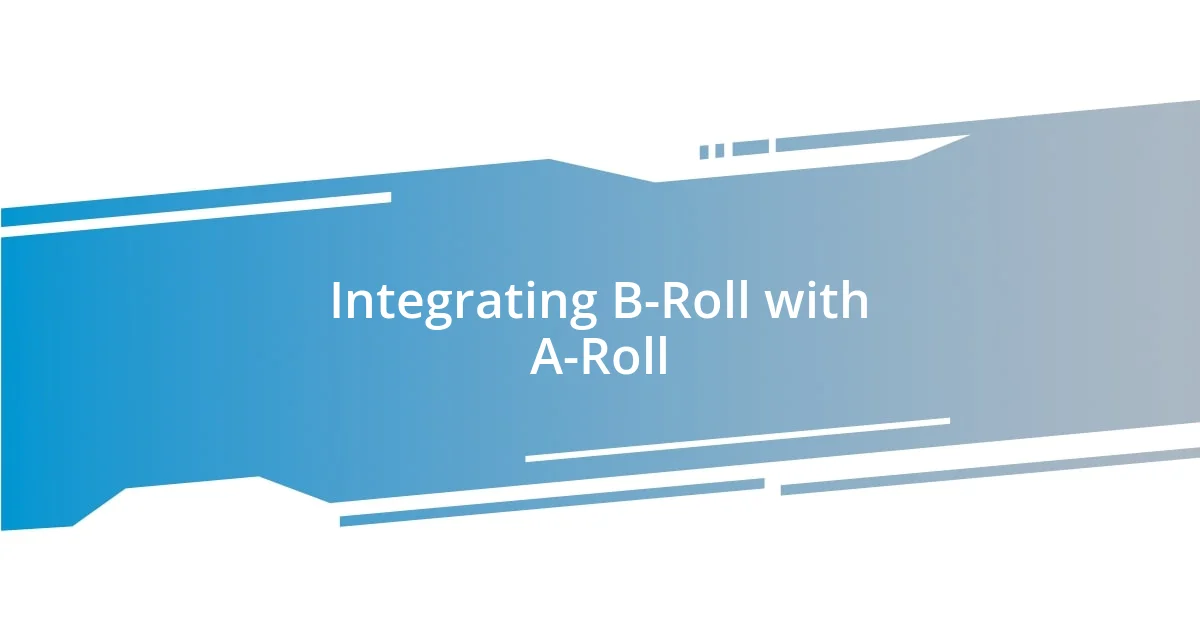
Integrating B-Roll with A-Roll
Integrating B-Roll with A-Roll can be an art form in itself. I vividly remember a project where I was documenting the daily life of a street artist. By embedding shots of his vibrant spray-painting alongside his narration about creativity and struggle, I created a dynamic interplay that was so engaging. It was fascinating to see how the visuals expressed what words sometimes couldn’t, giving the viewer a deeper understanding of his passion.
One technique that always excites me is the use of contrasting visuals. For example, while interviewing a chef about her culinary journey, I placed clips of her cooking in a bustling kitchen against her more reflective moments. This contrast not only kept the pacing lively but also underscored the tension between the frenetic energy of her work environment and the deeper meaning behind her creations. It draws the viewer in, don’t you think? This layering stimulates curiosity and enhances storytelling.
I’ve also found that maintaining a rhythm when cutting between A-Roll and B-Roll can significantly impact the flow of the story. I recall editing a documentary where I synced B-Roll of a flowing river with a narrator’s solemn reflection on life’s transience. The gentle, rhythmic movements of the water paired with her words created an immersive experience that lingered in the viewer’s mind. It’s moments like these that remind me how crucial it is to not just tell a story, but to evoke emotions and create connections through the footage we select.
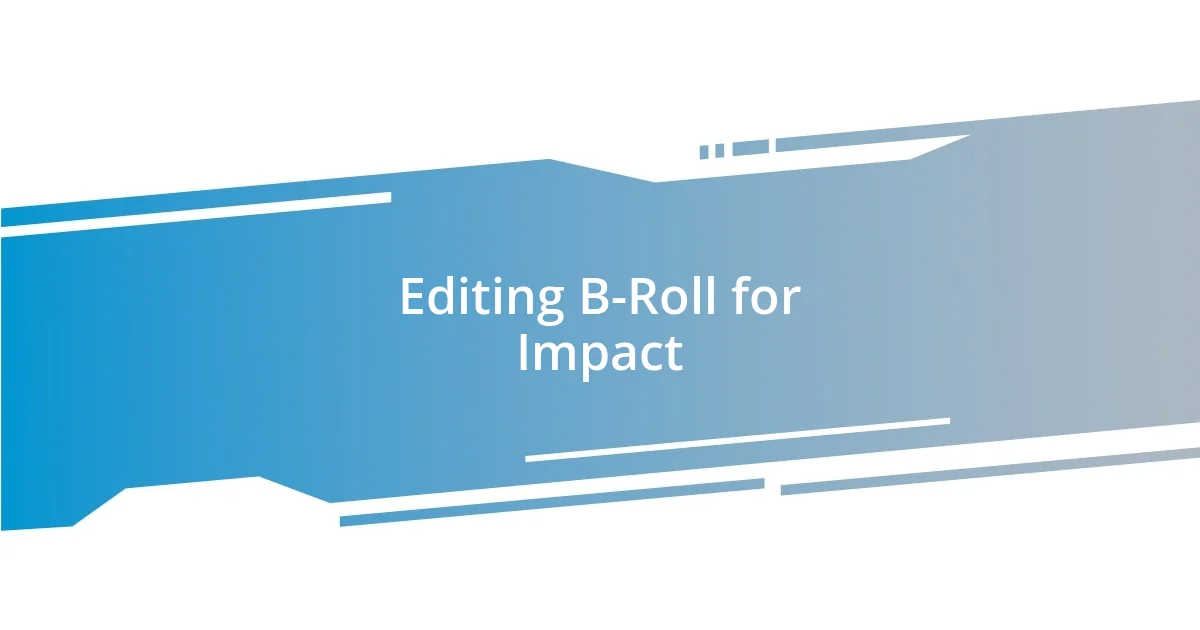
Editing B-Roll for Impact
Editing B-Roll for impact is all about honing in on the emotional layers of a story. I recall a project where I cut between close-ups of a father’s tears during his daughter’s wedding and wide shots of the celebration. This juxtaposition made those intimate moments resonate even deeper, transforming the footage into a striking emotional journey. Have you ever felt the power of an image that can tell a thousand words?
Another aspect I prioritize is the pacing of my B-Roll. In one documentary about a musician’s creative process, I used quick cuts of her performances paired with slow-motion footage of her crafting new lyrics. This rhythm not only kept viewers engaged, but it also represented the spontaneity of her art against the necessary stillness of reflection. Isn’t it fascinating how the speed of editing can mirror the emotional cadence of the narrative?
I also find significance in color grading during the editing process. For example, while documenting a poignant community event, I applied a warm filter to the B-Roll of people embracing and laughing. This choice intensified the feelings of nostalgia and warmth, making the audience feel like they were part of something special. It’s incredible how color can evoke emotions, isn’t it? When we take the time to edit with intention, we ultimately elevate both our B-Roll and the stories we tell.
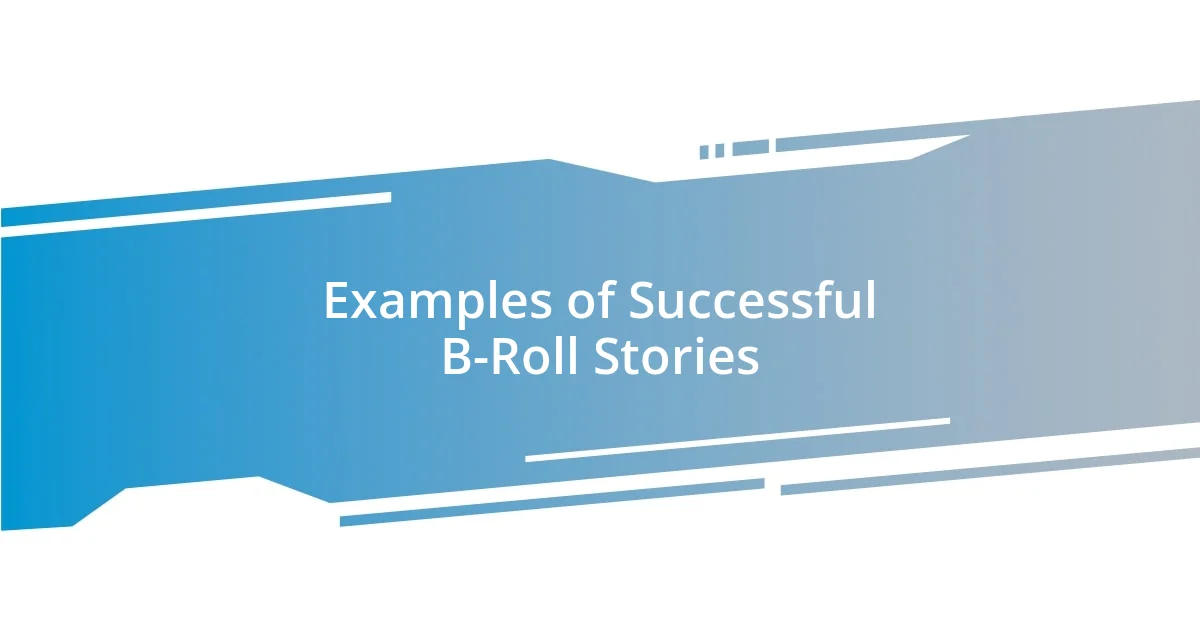
Examples of Successful B-Roll Stories
In one of my favorite projects, I showcased the life of a nature photographer. I intertwined breathtaking B-Roll of him capturing landscapes at sunrise with his reflections on solitude and the beauty of stillness. Watching the vibrant colors of dawn unfold while he spoke created a stark and beautiful contrast that truly connected the viewer with his journey. It made me realize how well-timed visuals can amplify emotional resonance.
I can’t forget the documentary I worked on about a small-town activist. Pairing her passionate speeches with snippets of community members rallying together provided a powerful narrative punch. Those glimpses into real people’s lives—smiling, protesting, and sharing stories—deepened the validity of her message. How often do we forget that it’s those personal moments that leave a lasting impact?
One memorable use of B-Roll that really stands out was when I covered a festival celebrating local art. Integrating shots of joyous faces, colorful creations, and live performances while narrators shared stories about the artists drew viewers into a vibrant narrative tapestry. This blend not only painted a vivid picture of the event but made viewers feel as if they were right in the midst of the celebration. Isn’t it remarkable how layers of visual storytelling can transform a simple event into a memorable experience?




